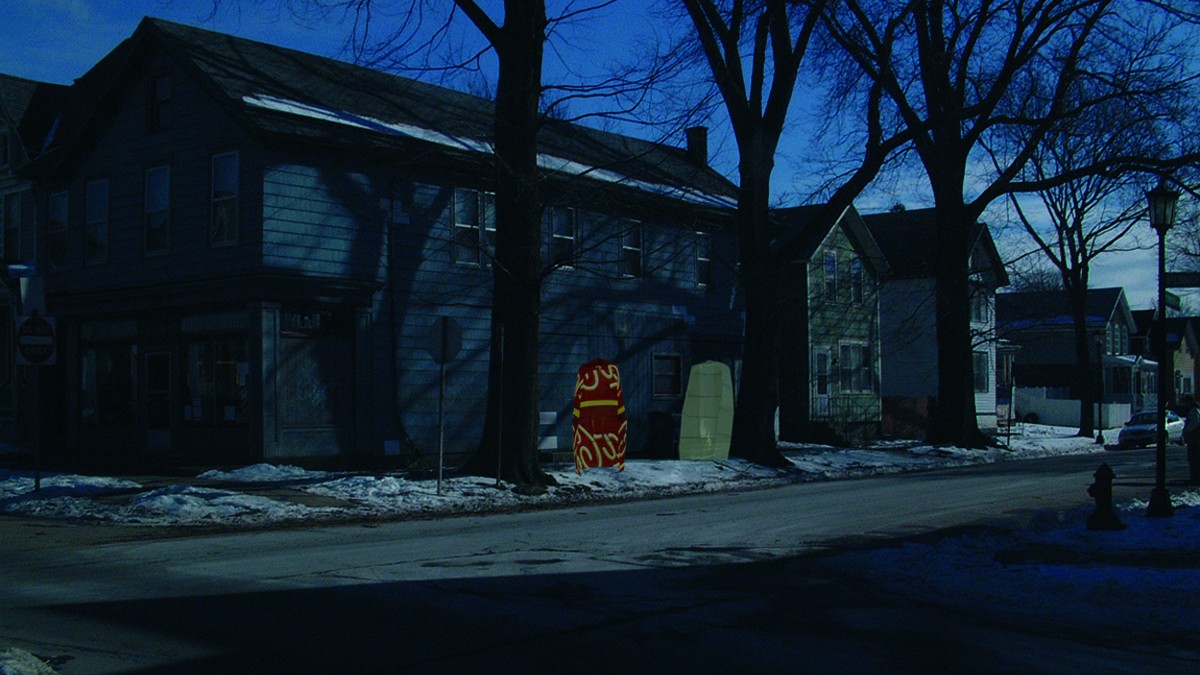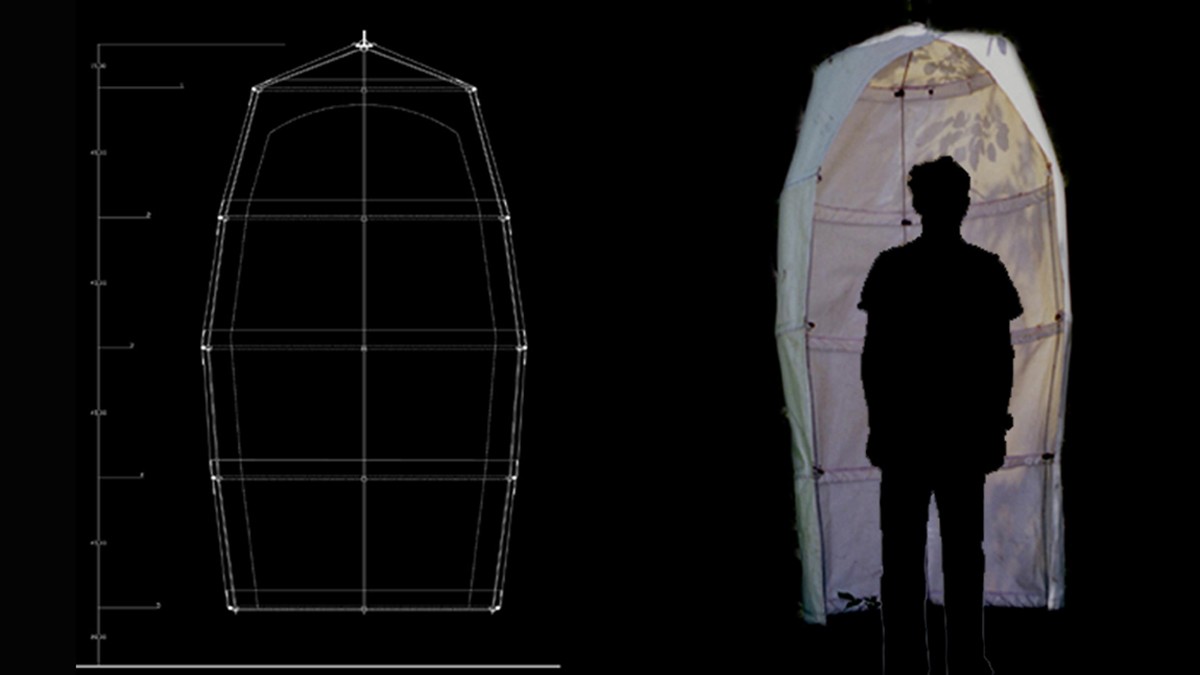Cocooning redefined (a bus shelter)
4 AR | 2001–2002 >> Brad Wales
University at Buffalo, New York [USA]
co-coon-ing (kõ koo'ning), n. the practice of spending leisure time at home, esp. watching television or using VCR [1984-90, Amer.]
co-coon-ing (kõ koo'ning), n. the practice of spending waiting time in a comfortable and intimate environment, sheltered from rain, wind and snow, esp. while waiting for the bus in Buffalo, NY [2002-, Amer.]
The concept of a bus shelter consisting of different detachable elements developed out of the different needs the shelter had to fulfill: providing shelter and being an object that has the quality ‘to impact the aesthetic character of the community and improve the quality of life for every resident’. The first demand not only covers the explicit need for protection against weather conditions (rain, snow and wind) but also the implicit need for an agreeable environment to spend a most unpleasant time: waiting for a bus.
In our individualistic society, where no one likes to be in close contact with strangers, the personal raincoat (or cocoon) seemed the best answer to the problem, while cocoons in bigger diameters –suitable for two or three persons– offer the opportunity to share space with friends or family.
Hanging from a structure with the underside of the cocoon about 25cm (10”) above the ground, protection against bad weather is offered while problems with accumulating snow and litter are avoided. To have sufficient protection against the wind, the cocoon is able to turn 360°, a feature also enabling the user to choose his/her view and degree of interaction with other people. Furthermore, the space between the ground and the structure offers some control from outside, without making the person inside feel as if he/she is being controlled.
The tent-like structure has the temporary air of an encampment, which is given a playful character by coloring the fabric of different cocoons in various colors. Ideally, the cocoons would be temporary structures made out of a transparent, advertising-friendly fabric –also perfect for cutting down the price.
In the original concept, a bigger structure would gather the different elements. However, this concept was buried in the fall, and when revisited the following spring semester, the design evolved to a detachable cocoon as an element that can be placed everywhere a shelter is needed –especially in the bus shelters designed and built in class.
Due to the fact that developing and constructing the design was more work than expected, having no budget, and a good portion of misfortune, the construction of the design stayed limited to one prototype.
Special thanks to T.A. Beau for advise, general help and believing in the project while every one else had given up; Justin E. for help with the steel framework and ‘mama’ Kim for sewing.


